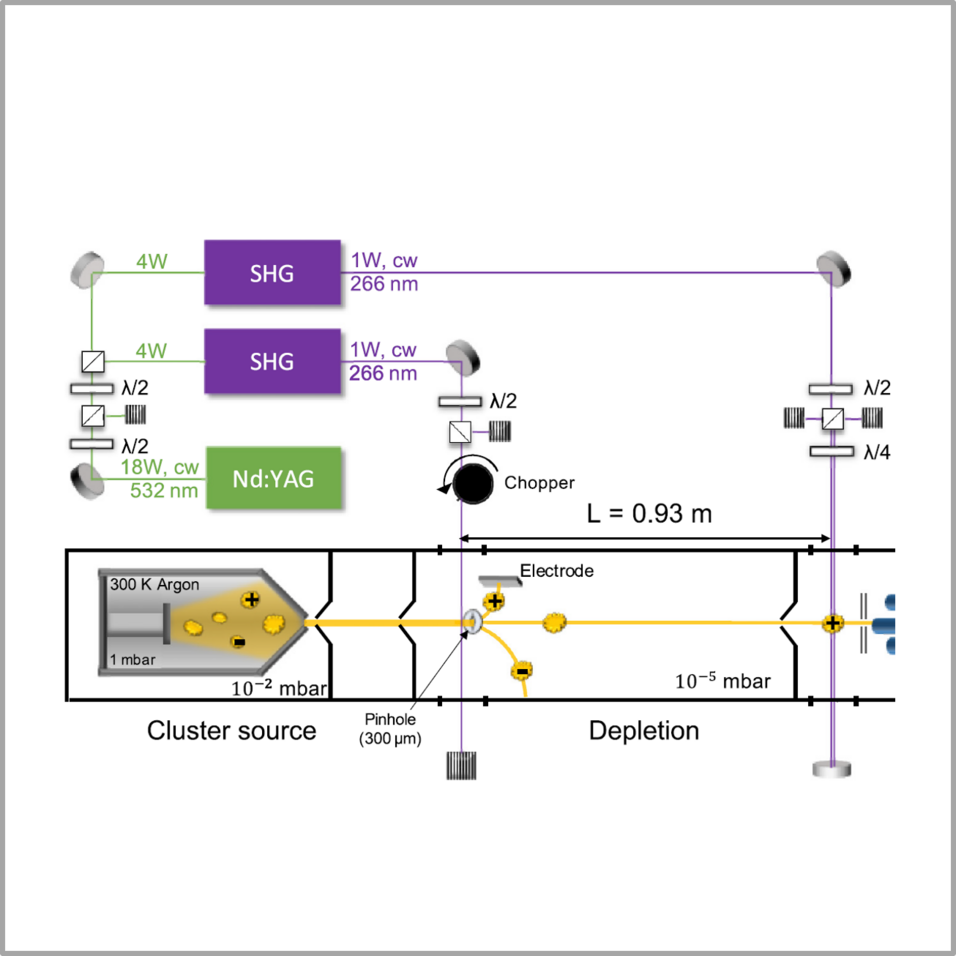S. Pedalino, T. de Sousa, Y.Y. Fein, S. Gerlich, and M. Arndt,
Exploring metal nanoparticles for matter-wave interferometry,
Physical Review A 106, 023312 (2022).
High-mass matter-wave interferometry opens interesting perspectives for testing fundamental physics while posing intriguing challenges in experimental technologies. Here we explore the source and detection techniques that will be the basis for the next generation of quantum experiments with objects at least one order of magnitude more massive than the current state of the art. Magnetron sputtering provides a means to produce a continuous metal cluster beam with a large variability in material composition, structure, temperature, velocity, electric, and magnetic properties. The mass-scalable nanoparticles come with high ionization yield and a detected beam brilliance of up to 1011 sr−1 s−1 clusters. We find favorably slow and narrow velocity distributions for mass-filtered clusters up to 800 kDa, which can also be readily ionized, manipulated, and detected by 266 nm UV laser light. The source-detector combination that we demonstrate here fulfills the essential requirements for a next generation of nanoparticle interferometry.

